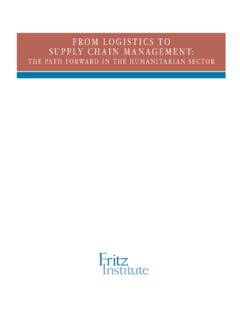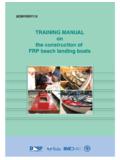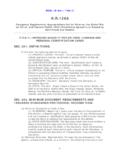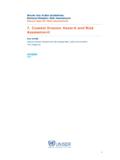Transcription of The Role of Coastal Forest and -coastal erosion as a ...
1 1 The Role of Coastal Forest and Trees in Combating Coastal ErosionPrasetya G S*Agency for the Assessment and Application of Technology Republic of Indonesia,Regional Technical Workshop, 28-31 August 2006, Khaolak, ThailandCoastal Protection in the aftermath of the Indian Ocean tsunami :What role of Coastal Forest and trees?*Now at The Department of Earth and Ocean Sciences, UW, Hamilton, New ZealandASR Marine and Freshwater Research, Raglan , New ZealandWhat is Coastal erosion ?- Coastal erosion as a natural processes -coastal erosion as a problem Managing the erosion problem-understanding the cause of erosion -the optionsShortcut to is Coastal erosion ? Coastal erosion is a natural processes. Many coastlines are naturally dynamic, and cycles of erosion are often an important feature of their ecological character. Wind, waves and currents are easily moved the unconsolidated sand and soils in the Coastal area; resulting rapid changes in the position of shorelines change ( erosion and accretion) take place over a range of time scales; it may occur: in response to smaller-scale (short term) events, such as storms, or regular waves, tides and winds, and in response to large scale (long term) events such asglaciations or orogenic cycles that may significantlyalter sea levels (rise/fall).
2 Without human involvement, those processes are just the basic movement of evolution to natural (uplift and subsidence)Normal eventsExtreme events ( tsunami ) erosion and depositionMangroves succession due to tectonic in Babi Island, off Sumatera Coast in Indian OceanHuman activities: along the coast (ie. reclamation, port development, shrimp farm); within the river catchments (ie. river damming and diversions), and offshore (ie. dredging, sand mining),in combination with those natural forces have exacerbated Coastal erosion in many places and jeopardize the possibilities for the coasts to fulfill their economical, social and ecological role on the long term and at a reasonable cost for the erosion as a problem3 Development within Coastal areas has increased the interest in erosion problems and has led to major efforts to manage the Coastal erosion problemand to restore the ability of coastto accommodate short and long terminduced changes occurring due to combination of human activities, extreme events and sea level to understand the key processesThe erosion problem become worse whenever the countermeasures that had been applied were.
3 Inappropriate, not properly designed, constructed, or maintained, and without careful evaluation on the effects to the adjacent shores,and it s often stop locallyat specific place or at regional or jurisdictional boundaries, rather than at system boundaries that reflect natural processesThe key parameters that need to be comprehended to understand the Coastal processes are: Coastal GeomorphologyWindsWavesTideVegetationdet ermining the coastline type and giving an indicative of Coastal processesthe main forces in wave generation,may transfer sediment from the beach environment landwardthe most importance forces for sediment erosion and transport in the Coastal zoneimportance on beach morphodynamics,modulate the action of waves , driving groundwater fluctuation and tidal currentsimportant in improving slope stability, consolidating sediments and provide some shoreline protection 4 THE PROCESSESC oastal erosion and accretion.
4 A complex processCoastal Infrastructure/miningNatural FactorHuman activitiesWaves drivencurrentsSediment scouring and transportWavesTidecurrentsLandslideSedim ent deficitWindsStorm surgesRainfallWater seepageDamsBreach of Coastal flooding defenceDestruction of buildingsCoastal floodingHabitat loss( , wetlands)Decrease of incomeClimate ChangeSea level riseCoastal erosionCoastal accretionPrograding beaches, Siltation, Damaged to Coral reefs, sea grass Within the river catchments Along the coast offshoreModified from Eurosion 2004 Potential human activities and natural factorsinfluencingshoreline change over a range of time scales (source: NRC 1990, Eurosion 2004).Managing the problem (NRC 1990, ARC 2000) Identify and confirm Coastal erosion as a problem; Identify, confirm and quantify the cause of problem and ensure that any management option well thought-out this reason before implementing the Coastal erosion measures options; Understanding the key processes and characteristic of Coastal dynamics and system boundaries that reflect natural processes of the erosion problem; Determine the Coastal erosion measures options and implementing it with proper design, construction and maintenance with careful evaluation on the effects to the adjacent shores.
5 Considered the balance of the options cost and their associated benefits. Site IdentificationConfirming the Coastal erosion is a problemIdentifying, confirming and quantifying the cause of problem and understand the environmental contextUnderstanding the key processesDetermining the Coastal erosion measures optionsAre non-structural/Softstructure options viable?Are hard structural options viable?Are combine options viable?Assess effects, preferred option and public consultationyesNoyesNoyesNoAre costs and associated effects acceptable?Proceed to detailed design, construction, maintenance and monitoringyes5 Options in Managing Coastal ErosionHard structural/Engineering OptionsStructures placed on the beach (eg. seawalls, rip-rap/revetment groynes, breakwaters/headlands) or further offshore (offshore breakwaters). These options interfere the Coastal processes to stop or reduce the rate of Coastal erosion .
6 The extension of Ngurah Rai International Airport Run-way in Kuta Bali Indonesia cause an erosion problem on the adjacent shoreDO NOTHING !6 Soft structural/Engineering OptionsAims to dissipate the wave energy in the same way what the natural system works and maintain the natural form of Coastal environment. These include beach nourishment/feeding, dune buildings, re-vegetations and others non-structural management options. Mangroves nurseries and plantingBeach nourishmentCoastal Forest re-vegetationCombined Hard and Soft optionsNecessary to improve the efficiency of the options and provide an environmentally and economically acceptable of Coastal protection system. causes erosion and unnecessary accretion, costly and often aggravated the problem, harming the aesthetical aspect of the beaches or coastlines they seek to protect, hence decreasing their economic value especially for tourism purposes only effective in short term took sometimes before it works (not overnight or quick fix solutions) that makes a negative public response, are found to be effective solutions only in medium to long term perspective ( 5 to 10 years).
7 Hard structural/Engineering OptionsSoft structural/Engineering OptionsEvaluation of the optionsThere is growing concern on natural protective function of the Coastal system7 NATURAL PROTECTIVE FUNCTION OF THE Coastal SYSTEMM angroves in Babi IslandSimeulue IslandErosionHealthy mangrovesHealthy Coral reefs,Sea grassKelpHealthy river catchment forestsForest clearingHealthyHealthyQ>>Not HealthyNot HealthyQ ~Dams Q <<Sedimentaion/AccretionriverNatural Protective function of Coastal habitatNot HealthyOffshore barCoral reefSea grassKelpIntertidal areaMangrovesSaltmarshesCasuarina,PinePa lm, dune vegetation, Waru Other Forest treesHigh tideLow tidewavesThe Coastal type, erosion Processes and The Forest FunctionCliff type coast can be categorized as hard coast, and natural erosion usually occurred due to slope instability, weathering and wave actions (modified from ARC (2000) and French (2001)).
8 8 Clayey Bank type coast can be categorized as Semi-hard coast, and the rate of erosion is relatively high compare to hard-coast because it s comprised of weaker and less resistant material. Natural erosion usually occurred due to Coastal processes, weathering and loss of vegetation cover (modified from ARC (2000) and French (2001)).A sand dunes type coast can be categorized as soft coast. It consists of unconsolidated material mainly sand, cobbles and shell and its profile is depending of wave form and energy and wind blown. Mostly erosion occurred due to loss of vegetations cover (modified from ARC (2000) and French (2001)).Shrubs, grass, bushA intertidal/muddy coast is characterized by fine grained sedimentary deposits predominantly silts and clay. Most of the Coastal erosion occurred due to rivers dams that reduce the sediment suply, loss of vegetation cover (usually mangroves and saltmarshes), and lowering the mud-flats in front of the vegetations.
9 Mostly vegetation on this type of coast is mangroves, saltmarshes and coconouts (modified from ARC (2000) and French (2001)).A sandy coast can be categorized as soft coast. It consists of unconsolidated material mainly sand, branches coral and shell that comes mostly from the fringing reefs. The coconout/palms trees/ pandanus/waru/casuarina are common on this type of coast (modified from ARC (2000) and French (2001)). 9 The Coastal Forest and trees at some extent play a significant role in protecting the shoreline from erosion caused by wave action, wind and fast tidal currents, however, the scientific back up only concentrated on two type of vegetations: Mangroves Forest Rhizopora Sp, Bruguiera Sp, Kandelia candel, Sonneratia and Avecenia, Saltmarshes Helophyte species (Phragmites australis (Cav.))
10 And Scirpus Lacustris L.), and also Spartina as pioneer species. Scientific Back-up(Source: Massel et al (1999)).Wave attenuation on Mangrove at Cocoa Creek, Australia Mangroves Forest and salt marshes can reduce wave height significantly (Mazda et al 1997, Massel et al. 1999) : Mangroves reduced the wave height over a relatively short distance by factors 86 90 % theoretically and based on observation, the wave energy reduced to 75 % when the wave passage through 250 m width of mangroves that consist of Rhizophora sp, Aegiceras sp and Cerioss reduction through mangroves Forest based on study by Mazda et al (1997) at Thuy Hai, Vietnam Because of Rhizopora spp and Bruguiera spp have intricate and large prop roots or numerous pneumatophores compared to Kandelia candel, these facts suggest that the effect of the drag force on Kandelia candel on long period waves such as tidal waves is weak compare to those of Rhizophora spp and Bruguiera spp, however, on adult trees, their efficiency in attenuating wavesis still high by factor up to 86 %.

















